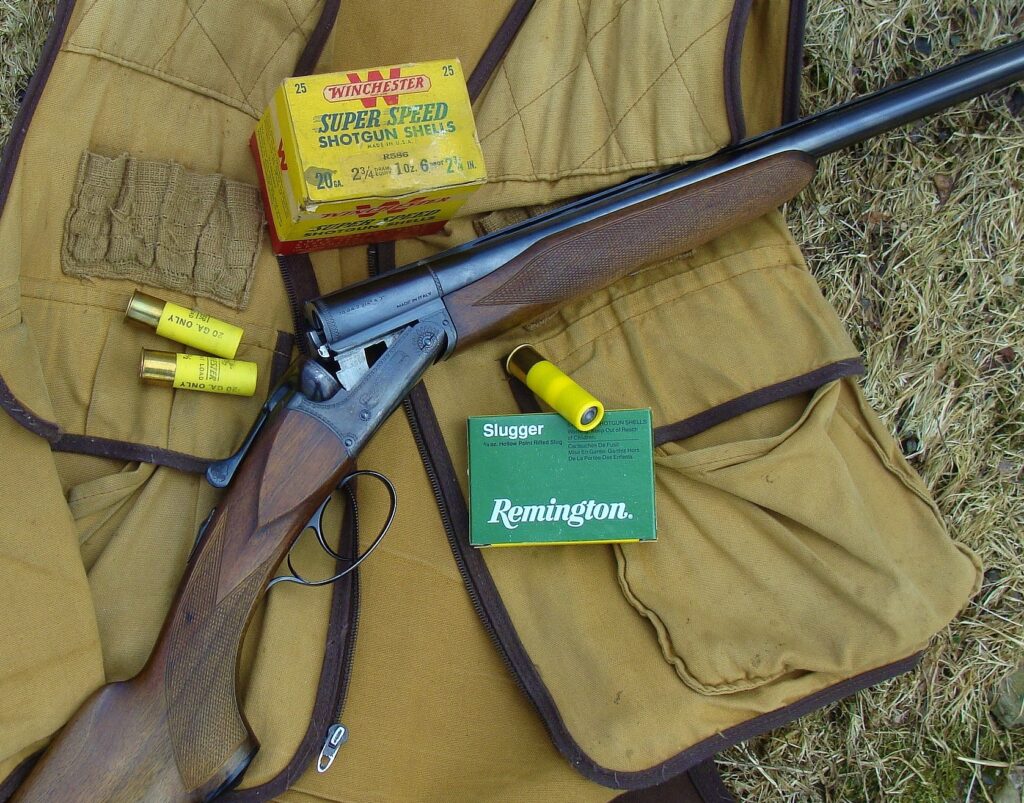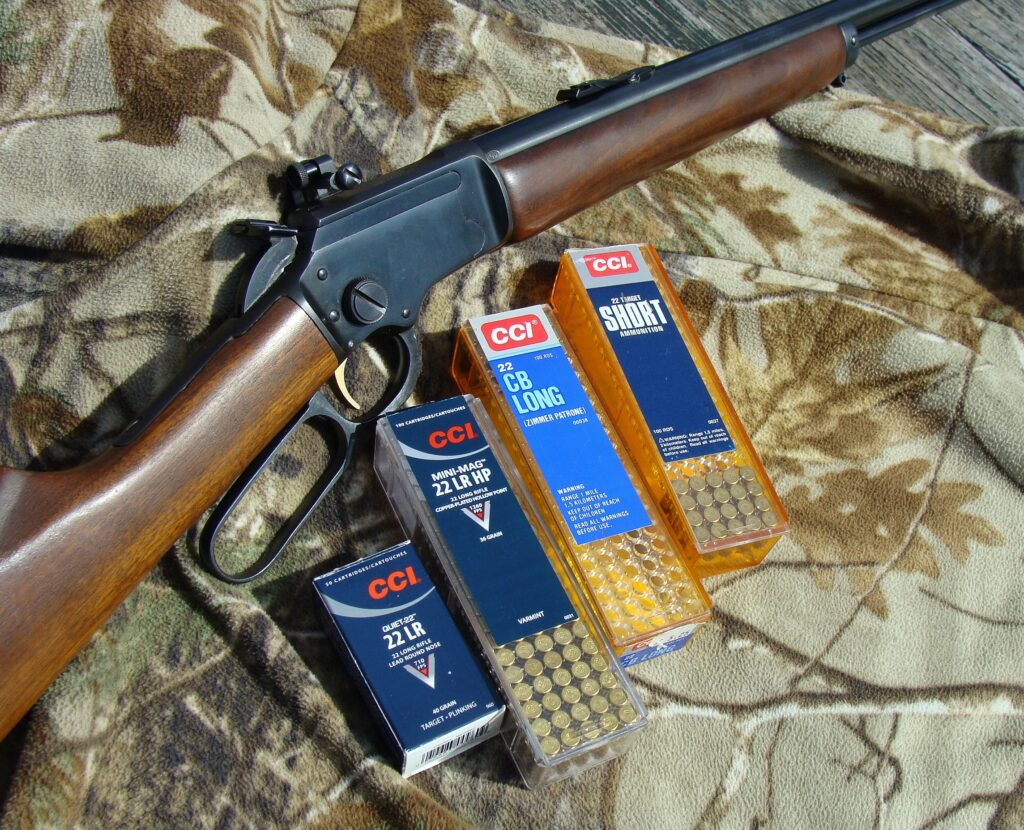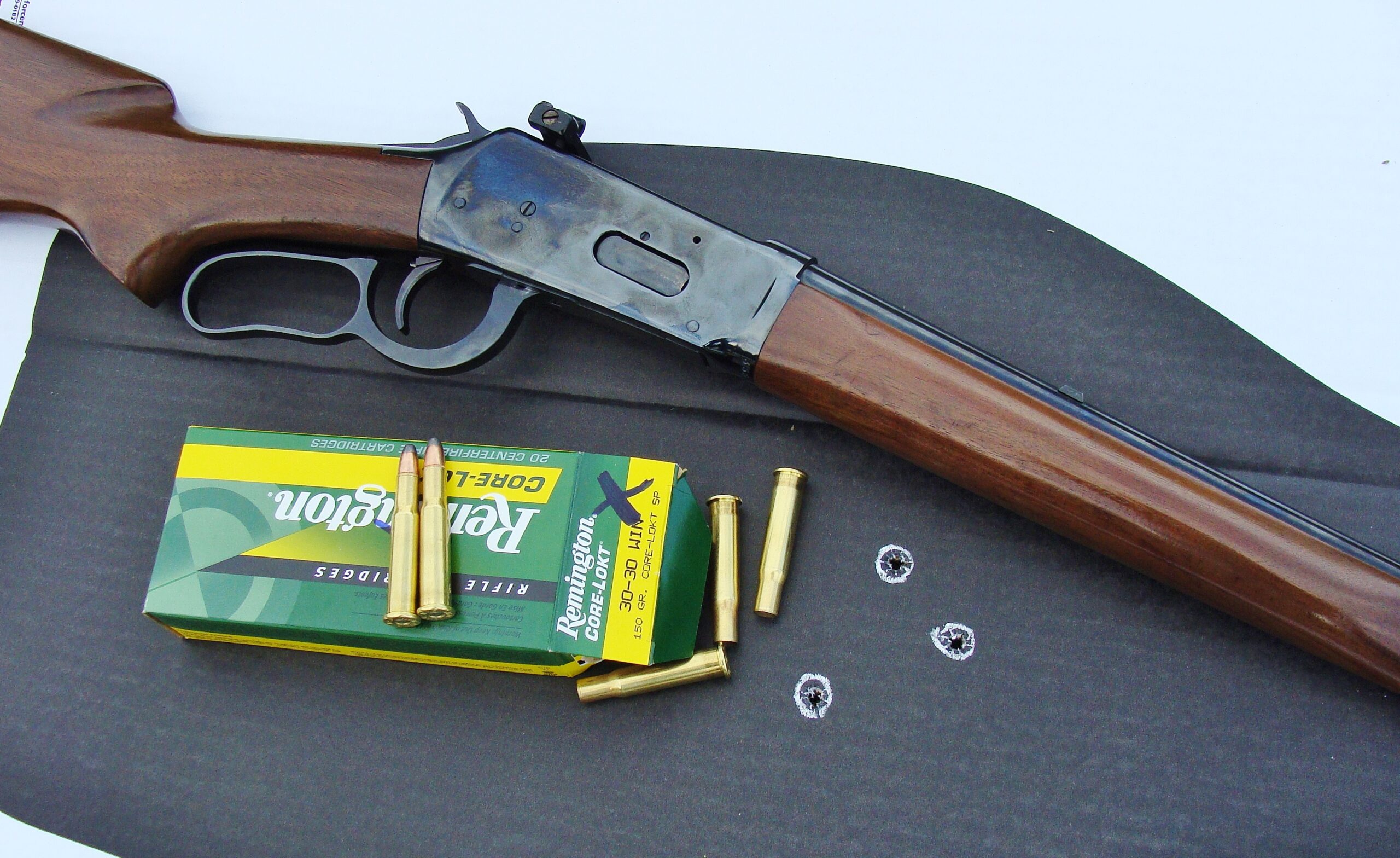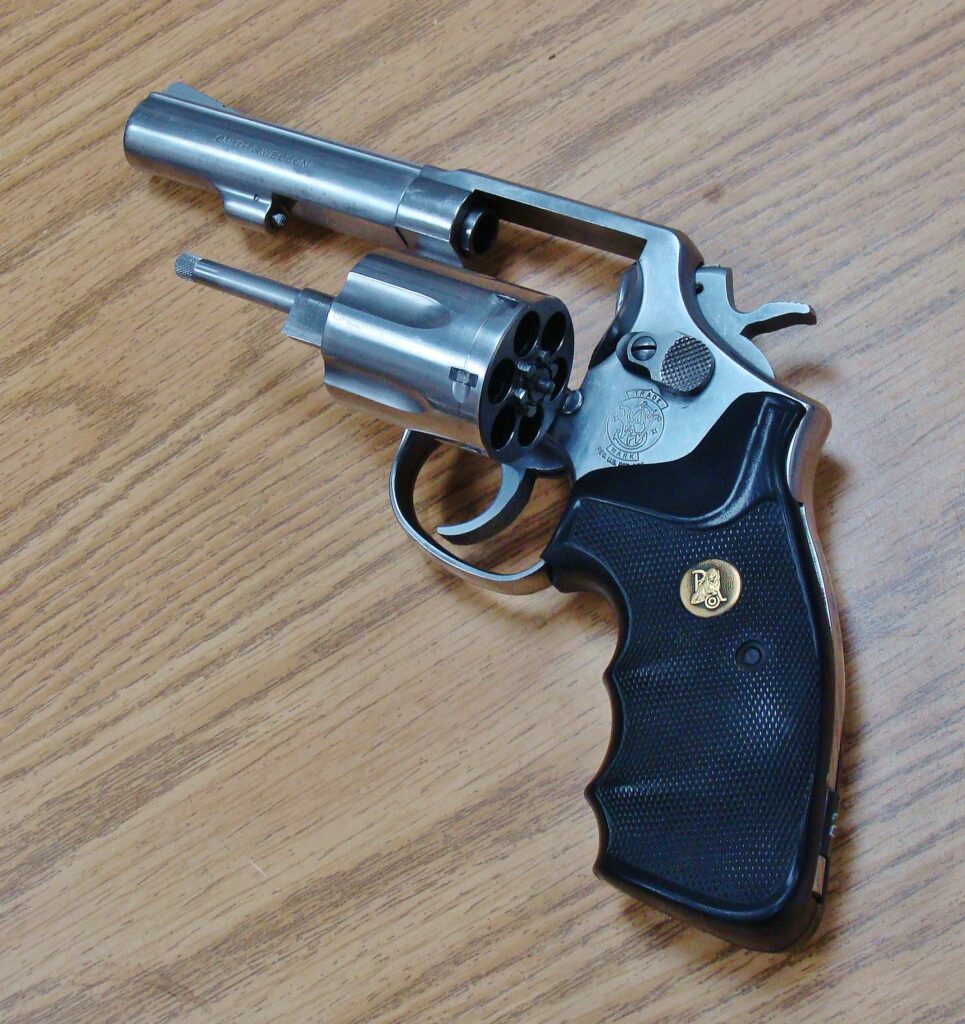My recent Starting a Survival Gun Collection piece established some guidelines for the selection of emergency-based firearms. The subsequent practical long guns and practical handguns posts were biased heavily toward proven reliability and ready availability of parts. But what if money is very tight? What are inexpensive guns preppers can use? Often it’s something that might already be in the family, or that can be bought for cheap.
by Steve Markwith, contributing writer and firearms instructor
Given the present state of affairs (written during the coronavirus pandemic), the choices in the prior articles were also skewed toward defense and/or subsistence-type requirements. The presumption was that, although defense would be a concern for all, others would hold less hunting interest, so the idea was to pick and choose as necessary from a menu of well-proven options; a mix of shoulder-fired types and handguns.
In my case, defense is a top priority, but hunting isn’t far behind. To cover anticipated needs, I’d want at least four firearms:
- a shotgun,
- .22 rimfire rifle,
- centerfire rifle, and a
- general-purpose handgun.
Being a gun person, this collection represents my bare-boned minimum, but it could easily cover or exceed the needs of many others. The area I live in is still rural. So, as far as I’m concerned, this is a good thing. However, defense is still a concern. Same story regarding resupply of rations. Thus, the above choices.
Actually, two could cover both situations (the handgun and shotgun). But three of these four (the shotgun, .22 rifle, and centerfire rifle) are ideal for restocking the larder with game birds, small game, or venison. And, even in more settled areas, some of these guns could work. The need for travel to hunt big game could take a centerfire (high-power) rifle off the table, but with the right loads, a basic .22 rifle is almost silent and, FYI, squirrels really do taste like chicken. Actually, where noise is a lesser concern, the shotgun alone could cover all of these needs, making it an ideal choice for true minimalists or those on a budget.
Of course, this assumes funds are even available, let alone purchasing options. If not, all is not lost. There are plenty of inexpensive guns to consider. Many American households already have one gun or more. Pretty much anything goes from recent polymer pistols to great grandpa’s old 10 gauge duck gun. There are some other useful possibilities, too. Let’s see what’s leaning in the closet or tucked on an upper shelf.
#1 – Bud’s Double-Barreled 20 Gauge Shotgun
If it’s in decent shape, you’re in business – assuming you can locate shells. If not, since 20 Ga. sales are only second to 12 Ga., a neighbor may have a stray box of 20-something. This well-used Charles Daly (actually built by Beretta) is stamped “2 ¾ or 3”, meaning it’ll also except three-inch magnums to cover all bases. Beyond birdshot shells (lots of small pellets), buckshot (several larger ones), and slug loads (fat bullets) are in circulation. However, slugs are harder to shoot accurately from side-by-sides.
Most older shotgun barrels have fixed-chokes (muzzle-constrictions affecting distribution of shot-patterns), making them less than ideal for all hunting situations. But, they can still get you by, and none of this will matter much if the role is home defense. Two gaping muzzles are guaranteed to command respect, and where distances are measured in feet, even birdshot will be devastating.

You also won’t find a system easier to load or unload. Just swing the top-lever sideways and both chambers will be revealed. Stuff in two shells and you’re in business whether right or left-handed. Once swung closed, a manual sliding-safety may automatically engage – or not. Many older types have two triggers and stocks with lots of drop (lower cheek sections), which can take some getting used to. Some could also be old enough to be unsafe, especially with today’s loads.
Other shotguns could be the once-popular 16 gauges. They’ll do, although shells will be scarcer. In any case, ask someone you trust (preferably a gunsmith) to examine the gun before shooting it. And, beyond other heirlooms like over & under shotguns, there are lots of useful pumps and auto-loaders to be found. Heck, even a beater bolt-action or single-shot break-barrel is a whole lot better than nothing!
#2 – Dad’s Lever-Action .22 Rifle
Thousands of perfectly serviceable “twenty-twos” lean in corners across the land, including bolt-actions, pumps, semiautos, and this Marlin Model 39-A. Built in the 1960s, it’s still a relative Model 39 newcomer. The barrel stampings indicate it can fire .22 Long Rifles, Longs, or Shorts. Its tubular magazine will feed them all.

For small game out to 50 yards or so, .22 LR loads (15 here) are an ideal choice that won’t shake up the area. If stealth factors in, .22 Shorts are a great alternative, useful nearly as far. Out to around 25 yards, ultra-quiet CB Caps could handle clandestine squirrel or pigeon missions. That’s exactly why the .22 LR rifle makes a good survival gun.
Of course, it doesn’t have to be a lever-action. Some, like most semi-autos, won’t digest low-powered Shorts or CBs, but they often can be chambered manually. CCI’s new low-velocity .22 LR “Quiets” are another possibility, also great for ventilating cans.
Regarding the Marlin above, note the absence of a scope. Although one could be easily mounted, the excellent Lyman receiver sight provides decent accuracy and easy carry. If storage is a concern, the Marlin M-39 will separate into two pieces for compact transportation by simply backing out a large knurled knob on its receiver. Your closet might have something different like a simple bolt-action or pump, etc. If so, no problem; it should work assuming it’s chambered for .22 LR. If not, don’t try firing this caliber in .22 WCF (now obsolete) or .22 WMR (.22 Magnum) rifles!
#3 – Dad’s Classic Deer Rifle
Lord only knows how many deer have been laid low by lever-action Marlin or Winchester rifles. Many, like this Winchester Model 64-A (a version of the famous M-94), are chambered for the still-popular .30/30, now 125 years young.

Today’s sexier new calibers draw more attention, but the 24-inch barrel of this circa 1970 lever-gun produces 2,350 feet per second (fps) with plain 150-grain Remington Core Lokts. This load hits harder than 7.62×39 AK rounds or trendy AR-15 .300 Blackout calibers. Odds of finding a stray box of .30/30 rounds will also be greater in many locales with general stores, etc. Truthfully, these “old” lever-actions actually handle better. That trait, and their ability to deliver quick following shots, account for their continued presence in the deer woods. Unlike AR or AK-types, they’ll also raise few alarm bells.
BUT, that doesn’t rule out a lever-action for defense! One unique advantage involves sustained loading. The tubular magazines common to traditional designs can be topped off via their loading ports as opportunities permit.
Most I’ve shot are also more accurate than SKS or AK-types. With good eyes, even using their basic iron sights, two-inch 3-shot group (or better) are not uncommon at 100 yards. That’s the norm for this Model 64 A, aimed by a weatherproof Williams receiver sight. Scoped versions sometimes do even better. Most are solid-top Model 336 Marlins with side-ejection, amenable to mounting of scopes. But either way, a M-336 is another good score – with obvious similarities to the Model 39-A rimfire.
Other common centerfire finds are sporting auto-loaders and pump-action rifles in more powerful but widely available calibers such as .270, .30/06, or .308. Many wear scopes which is nearly guaranteed if the find is a bolt-action. However, even this older peep-sight equipped .30/30 Winchester can be stretched to 200 yards. Scoped rifles chambered for the more potent calibers can double that range – assuming they’re properly zeroed. The only way to tell is to put some shots on paper. But, give it a good cleaning first and check for loose screws, etc.
One thing is for sure, everyone within a mile will know when you cork off a shot. However, the .22 Marlin offers an alternative for some relevant practice. Learn to run it on your shoulder and those skills will transfer to the .30/30. At that point, you’ll have a seriously effective rifle which will also work for left-handed users.
#4 – Uncle Bob’s Retired Police Handgun
Good news! It’s an S&W Model 65 double-action revolver; an extremely popular LE choice through most of the 1980s. The stainless steel construction and rugged fixed-sights provided a durable companion that also carried well. Its standard 4-inch barrel is stamped .357 Magnum, meaning it will also fire .38 Special cartridges. Both are extremely useful and widely distributed calibers capable of covering all bases from defense through close-range hunting or target practice.

Full-power .357s have plenty of power; about as much as most shooters can manage. Warmer +P .38s tame recoil, but are still entirely suitable for self-defense. Standard .38 Specials work nicely on small game, and offer an affordable target practice option with minimal recoil. More than a century of use has spread these cartridges to all corners of the nation. Dead-nuts reliable, this easy-to-operate M-65 (and similar types) is a worthy discovery.
But, anything goes regarding handgun finds from beat-up nickel-plated revolvers in obscure calibers, to valuable German Lugers. Although the latter could be a viable last-ditch home defense option, I’d rather not carry either. Even if safe to fire, many types raise concerns regarding suitability for carry purposes, not to mention essential training.
Which prompts another major worry: Firearms safety. If you don’t understand the basic rules, a firearm becomes a liability. A little knowledge can be a dangerous thing. If you don’t understand how a firearms works, leave it alone! Controlled access is a further responsibility. Haphazard storage methods (like closet shelves or drawers) are often accidents just waiting to happen. Get a locking bedside mount or some other safe storage device.
On the brighter side, if you haven’t noticed, beyond offering ambidextrous operation, all of these guns are self-contained systems. It’s anyone’s guess how many other types languish unused for lack of missing magazines (or even bolts). Given a stash of loose rounds, you can use these four guns. And most aren’t fussy eaters. Sometimes, simple can be good. This could be one of those times.

5 comments
Little disappointed. the way the title read the article was going to discuss low cost gun options. this article is only talking about what a family could find and or inherit but not actual talk of low cost guns. I am a prepper who would and does value this information as my family when i grew up didn’t believe in guns, so none of the guns you described here in this article are actual options. At the very least you could have named some low cost guns in each of these categories. Ok rant done about your click bait
For someone in your situation here’s my 2 cents worth. Inexpensive doesn’t necessarily mean cheap. In my humble opinion, when money is tight, try and go with a rifle/carbine and pistol in the same caliber. My personal preference is Hi-Point. You’ll hear lots of haters with a plethora of opinions as to why you shouldn’t go for these guns. Most of these brain trusts have never fired these American made, lifetime warranty guns. I have.
Extensively.
My favorite combination is the 4595 carbine in .45 caliber accompanied by the JHP .45 caliber pistol. They use the same magazine. I’ve hit a 6″ metal gong at 200 meters consistently. The pistol is heavy, ugly but will shoot the cheapest aluminum cased ammo as well as the most expensive self defense loads. Same for the carbine. They work. And the .45 round will take a wild pig as well as any bad guy.
The pistol will run you around $200 new and the carbine is $300 -325. The nice thing about buying these used is you can send them into Hi-Point for ANY problem and they will fix it or replace it free. You don’t have to be the original owner.
So, for around $500 or less you can have personal protection and hunting abilities for next to nothing.
My collection has expanded to include Henry’s, Glocks, Winchesters, Sigs, and others but when you are just starting out nothing beats inexpensive and reliable. Oh, should you want to expand to 4 guns, Hi-Point has carbines in .380, 9mm, .40 caliber and 10mm too. Their 9mm pistol is very popular, fun to shoot and accurate. The only drawback is the pistol magazine doesn’t work in their carbine.
FYI, I don’t work for Hi-Point nor get paid by them. I’m a retired LEO who trains people to work with what they have and survive well.
Again, just my 2 cents worth.
Remember to always look up so you won’t fall down.
Nice article. I’m a bit late to the party, but I’d like to add something.
Among those old shotguns people may inherit, there are surely going to be a couple with Damascus twist barrels. There used to be wide consensus that these things would blow apart from the pressure of many modern loads. Naturally, there are plenty of people who dispute that. But I’d advise anyone who finds an an old scatter-gun to learn whether it’s a twist or fluid steel construction. Then they can do their own research and decide how/if to utilize it.
Personally, I’d determine the value and use it for trade. Those old, rare side-by-sides have a lot of swapping value.
Four inexpensive guns ay? I would opt out of the rimfire and go with two shotguns. A high point carbine and a SAR B6 both in 9mm. Go out into the woods and sit down for 12 hours.. At the end of 12 hours make a list of what you have seen.. Bet you will most likely not have seen much in the way of big game.. But I bet you will have seen some birds or small game. A shotgun you will eat, even if its odd or humbly. Centerfire rifle you will have hungry nights. Rimfire isn’t good for smaller birds. Rimfire ammo isn’t reliable after exposed to much bad weather.
That’s good advice.